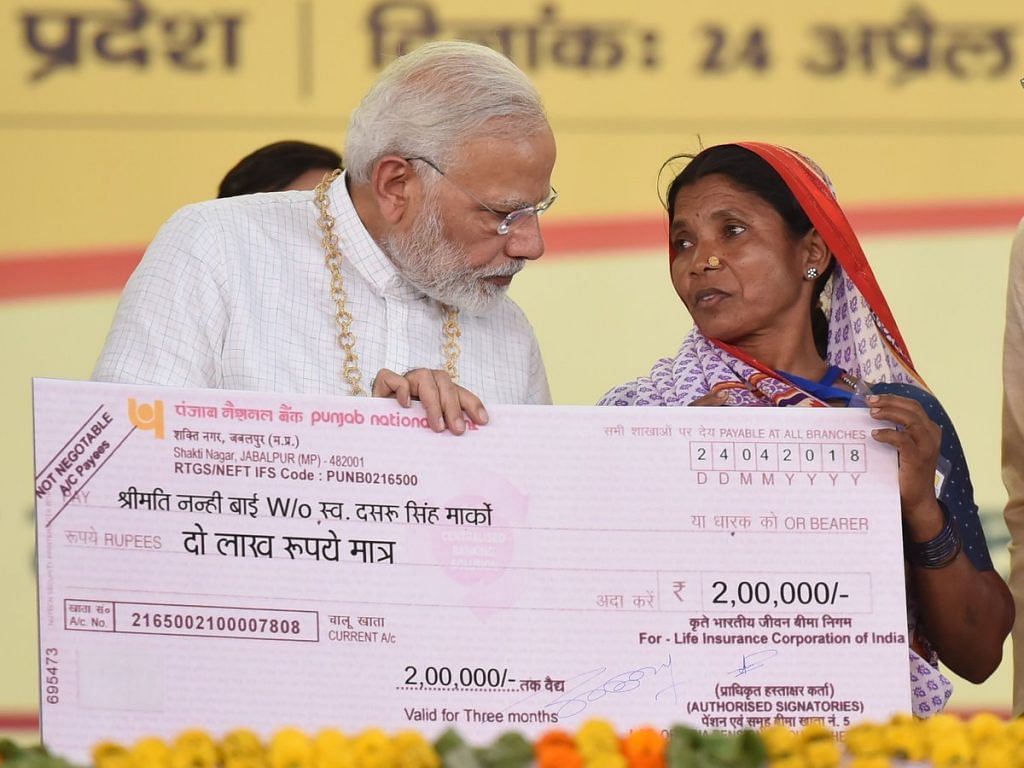Data analysed by ThePrint shows in MP, Rajasthan and Chhattisgarh, BJP won only 46% of 80 urban seats, down from the 80% it won in 2013.
New Delhi: An erosion of its crucial urban base has been a key factor behind the significant reverses faced by the Bharatiya Janata Party (BJP) in the Hindi heartland states in the just-concluded Assembly polls, with the party managing to win less than half of the urban and semi-urban seats.
According to data analysed by ThePrint, in Rajasthan, Chhattisgarh and Madhya Pradesh — all three states in which it was the incumbent — the BJP won only 46 per cent of the urban seats, down from the 80 per cent it had won in 2013.
The urban votebase — particularly the middle class, traders and the business community — has in a way been the backbone of the BJP’s electoral success, holding it in good stead even in the most difficult of elections.
Methodology
For the purpose of this exercise, ThePrint looked at key urban centres in these states by identifying Assembly constituencies that fall under the Lok Sabha seats of these centres. Thus, the results in 80 seats that can be identified as urban and semi-urban seats across the three states were analysed.
In Rajasthan, Assembly seats that fall in Jaipur, Jodhpur, Bikaner, Kota and Udaipur Lok Sabha constituencies have been picked, while in Madhya Pradesh, the constituencies in Indore, Bhopal, Gwalior and Jabalpur Lok Sabha seats have been analysed. In Chhattisgarh, the capital Raipur has been chosen for the study.
Also read: BJP lost the Hindi, Hindu, Hindustan states
Overall findings
Of the 80 seats, the BJP won only 37 this time against 64 in 2013.
However, of the 64, the BJP could only retain 32 seats this time and picked up five more it had not won in 2013, indicating a sizeable loss of this votebase.
In some seats that it has managed to retain, the margin of victory has fallen drastically. Take for instance the Udaipur Assembly seat in Rajasthan, where senior BJP leader Gulabchand Kataria managed to win by a margin of about 9,000 votes — down from his 2013 margin of 24,600. Or Ashok Dogra of Bundi, who had won by more than 27,000 votes in 2013, but has scraped through this time with an excess of just about 700 votes.
In Madhya Pradesh, Rameshwar Sharma of Huzur won with a decent 15,000-vote margin, but still significantly less than the handsome margin of 59,000 in 2013. Mahendra Hardiya from Indore-5 Assembly constituency got 1,133 votes more than his main rival, as against the over 14,000-vote margin last time.
State-wise findings
The worst performance of the party in urban centres has been in Chhattisgarh where it managed to win just 22 per cent of these seats, down from 67 per cent in 2013. Chhattisgarh is where the BJP has faced the worst drubbing, reduced to a mere 15 of the 90 Assembly seats. It has, in fact, lost around 45 per cent seats it won in the previous election.
In the other two states where it was ousted from power, its performance in urban areas has been slightly better in Rajasthan, where it has won 54 per cent of these seats, as against 44 per cent in Madhya Pradesh. In both the states, however, the show has been a drastic step down from 2013 when it won 87 per cent and 75 per cent of urban and semi-urban seats in Rajasthan and Madhya Pradesh, respectively.
Also read: Amit Shah is losing his winning touch. BJP needs a new strategy
The causes
While most of the BJP’s losses are being attributed to rural distress and agrarian anger, the party seems to have lost some of its loyal urban votebase as well, and it is a combination of the erosion of both the rural and urban bases that has led to its defeat to the Congress in all three states. Policy decisions like demonetisation, the manner of rollout of the Goods and Services Tax (GST), an anti-incumbency sentiment as well as overall voter fatigue could be the possible causes of the BJP’s losses in urban centres.
Moreover, the hardline Hindutva stance adopted by the party in its campaign — led most notably by BJP president Amit Shah and Uttar Pradesh Chief Minister Yogi Adityanath — could also have tilted the moderate, urban voter against it.
This is unlike the BJP’s track record in recent Assembly elections. In Gujarat, for instance, where it came back to power but went down from 115 to 99 seats, it swept the urban areas — winning 16 of the 21 seats in Ahmedabad, 15 of the 16 in Surat and six of the eight in Rajkot.
The latest elections, however, tell a different story.
The BJP can barely afford the disillusionment of this constituency, which is absolutely critical for it in the run-up to the 2019 polls, and will need to urgently factor in this changing voter dynamic.
